
This wasn’t like Dorothy Gale’s adventure to get back home after arriving in Oz-it was a 13-year-long probe into the pair of ruby red slippers once worn by Judy Garland in the 1939 film, The Wizard of Oz.
Michael Shaw, proprietor of one of the four sets of ruby slippers used in the film, disclosed during the ABC News Studio docuseries “Ruby Red Handed: Stealing America’s Most Notorious Pair of Shoes,” which aired on Hulu Aug 26, that people have described his shoes as both renowned and infamous. He found this an unusual honor.
The story associated with Dorothy commences in Kansas, while this narrative originates in Minnesota. Shaw loaned the slippers to the Judy Garland Museum situated in Grand Rapids, Minnesota – the actress’s birthplace. However, in August 2005, something quite malicious transpired: An intruder breached the museum, shattered the protective Plexiglas surrounding the shoes and made off with the famous footwear.
Evidence discovered at the museum pointed towards a break-in; a broken window and shattered glass on the floor were indicators that someone had forced entry through the door, but no other substantial proof was found.
In the docuseries, Amanda Moon, author of ‘Stealing the Ruby Slippers,’ mentioned that a single sequin was discovered at the scene. She further added that there were no fingerprints, making it seem like the ideal crime with no clear evidence to trace.
It’s clear that the theft wasn’t some magical feat, considering the security lapse. As documented, the museum staff accidentally disabled the alarm for the burglar’s entrance due to a false alarm triggered by children. Unfortunately, they failed to reactivate it. Additionally, there was no CCTV footage available.
In a true crime documentary series, Maria Awes revealed that by 2017, despite still lacking answers, the police had received a valuable tip from an individual named Michael Insabella. This tipster, who hadn’t been charged with any crime, was approached by an intermediary to help broker an exchange of the stolen slippers for a $1 million reward. However, at that time, only a $200,000 reward was on offer from the insurer of the shoes. Investigator Brian Mattson further explained that this sum was not enough and that the shoes could potentially disappear for another decade or more, be sold, or destroyed with such a low reward amount.
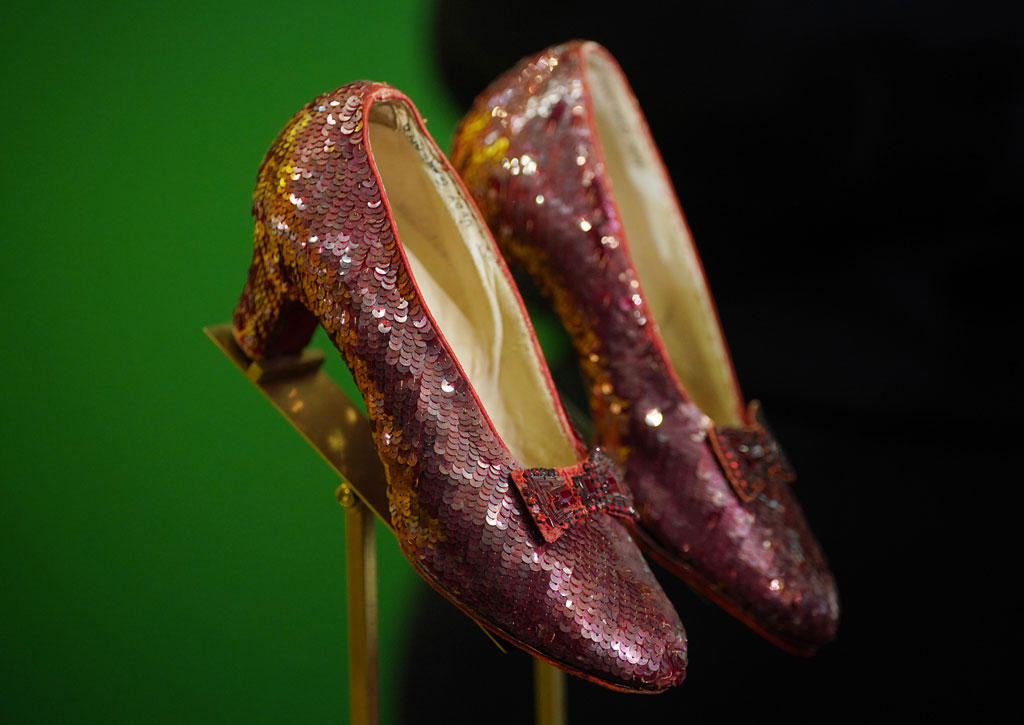
Under the belief that a $400,000 reward was at stake, the documentary went on, with a middleman agreeing to meet at an art gallery in Minnesota in July 2018. However, this meeting turned out to be a covert operation orchestrated by law enforcement and the FBI. It was during this operation that the middleman, who the documentary referred to as defense attorney Joe Friedberg, returned the slippers.
In a September 2018 press release, Grand Rapids Police Chief Scott Johnson expressed his relief, stating, “We were certain this day would eventually arrive, and we are thankful to the FBI and everyone involved in bringing this cinematic artifact out of obscurity and into the spotlight. As they say, ‘There’s no place like home.’

It appears that the police didn’t need to search far for the individual who took the shoes. According to the documentary, the FBI investigated the phone records of a person named Friedberg, who wasn’t charged with any crime, and eventually caught the suspect: Terry Jon Martin from Grand Rapids, Minnesota.
In 2023, Martin admitted his guilt in stealing major artwork, an item of cultural significance belonging to a museum, as stated by the U.S. Attorney for the District of North Dakota. The 76-year-old was sentenced later that year to have served his time, under supervision for a year, and pay $23,500 in restitution to the Judy Garland Museum, thus avoiding jail time as he was residing in hospice care.
It appears that Jerry Hal Saliterman wasn’t working alone. In March 2024, it was reported by NBC News that he faced a charge for stealing a significant artwork. This charge against him was dropped in 2025 following his death at the age of 77, as reported by The New York Times.
Interestingly, the stolen items were returned to their owner, Shaw, but they were sold at auction in December 2024. Heritage Auctions disclosed that the sale price, including taxes and fees, reached an astonishing $32.5 million.
If this tale hasn’t left you spinning yet, stick around for more fascinating facts about The Wizard of Oz!
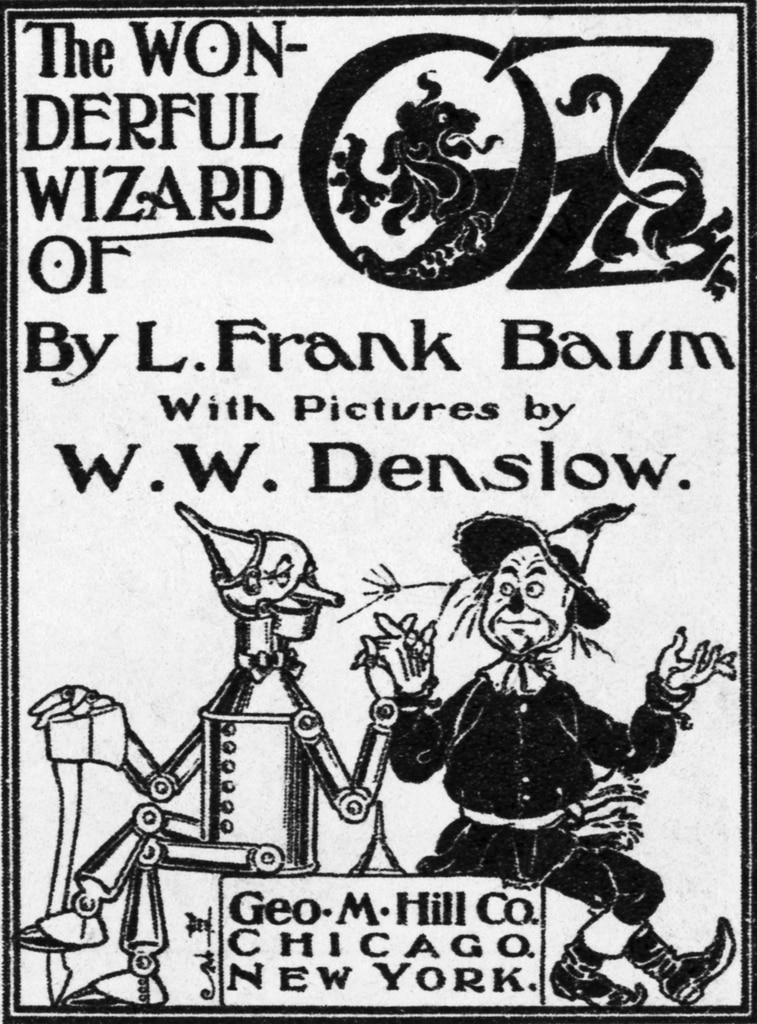
times past weren’t necessarily easier when it came to filmmaking; even the production of “The Wizard of Oz” was chaotic right from the beginning.
Arthur Freed and Mervyn LeRoy both claimed responsibility for proposing the concept of a musical adaptation of Frank L. Baum’s beloved children’s story, “The Wonderful Wizard of Oz,” to Louis B. Mayer, the head honcho at MGM.
The team experienced changes with four different directors, over a dozen scriptwriters like Herman J. Mankiewicz (Citizen Kane’s scribe) and Ogden Nash (poet), as well as numerous cast adjustments, before finally settling on everyone who would be involved for the long term commitment.
The individuals who ultimately received recognition for transforming Baum’s tale into a screenplay were Noel Langley, Florence Ryerson, and Edgar Allen Woolf.
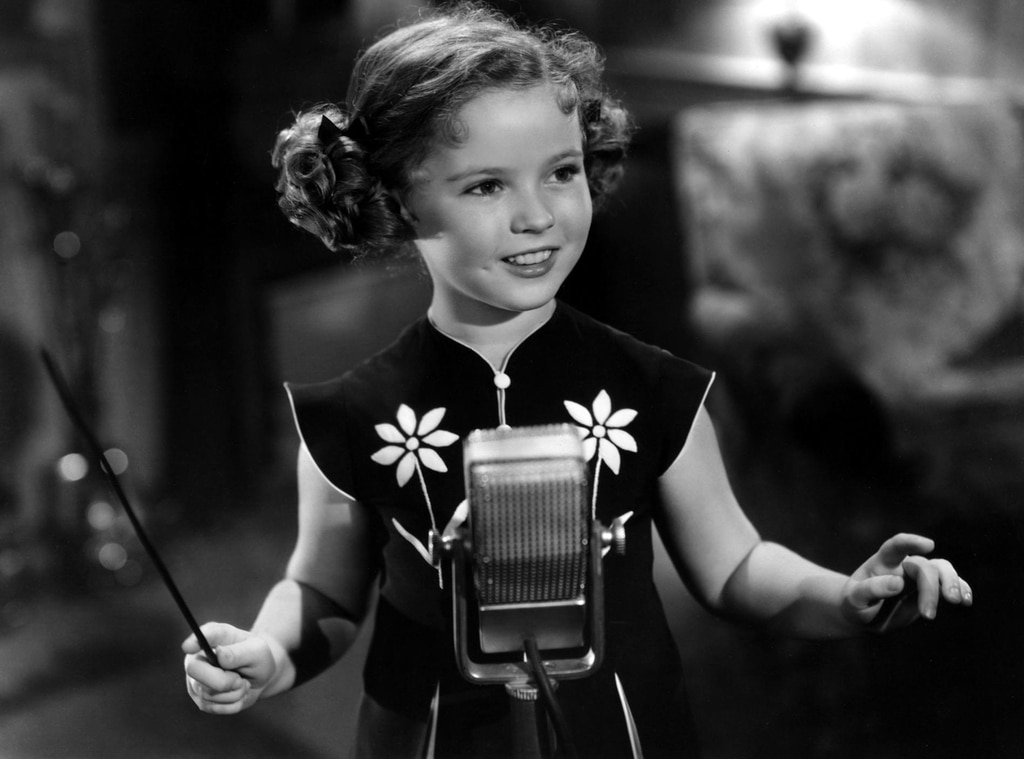
Initially, when MGM acquired Baum’s saga, Louis B. Mayer imagined 9-year-old Shirley Temple for the role of Dorothy, with her last name, Gale, becoming known later in the third book, “Ozma of Oz.” Additionally, he envisioned W.C. Fields as the character portraying The Wizard.
Meanwhile, MGM cofounder Samuel Goldwyn wanted Eddie Cantor for the part of Scarecrow.
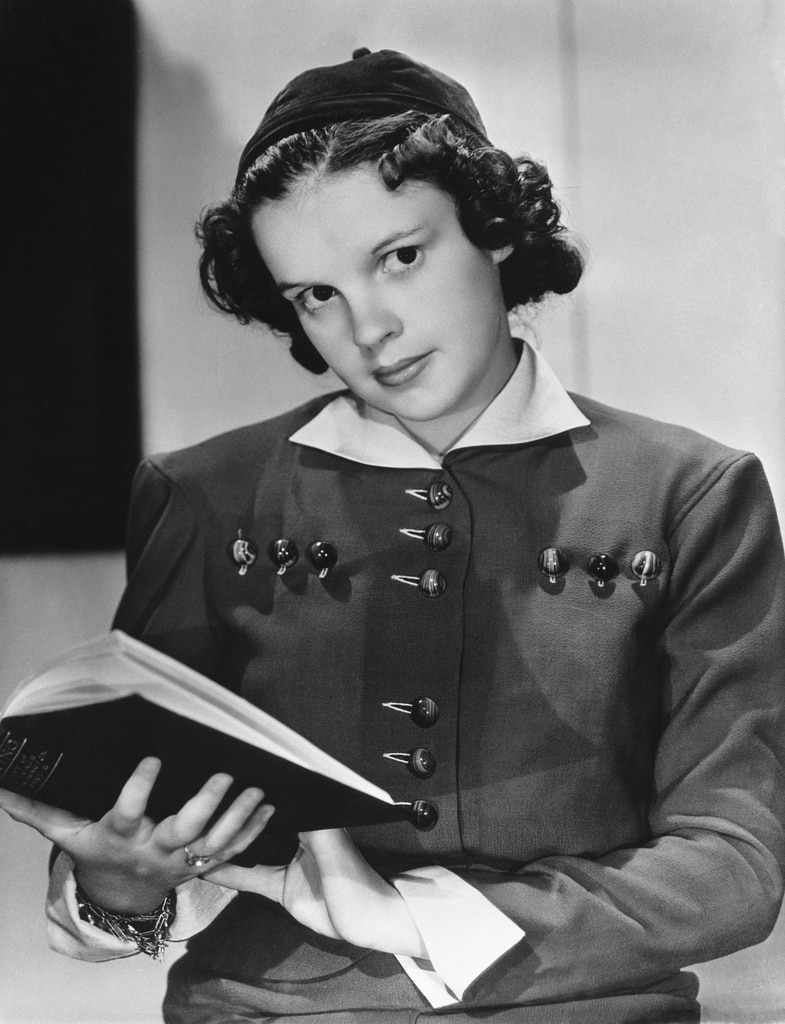
Judy Garland, on the other hand, was already bound by a contract with MGM as early as 1935, when she was just thirteen years old.
In most cases, the studio agreements held sway: 20th Century Fox declined to lend Temple to MGM, and unfortunately, Deanna Durbin, Mayer’s alternate choice for Dorothy, was already unreachable.
Producers Freed and LeRoy had initially envisioned Garland, previously recognized for her collaborations with Mickey Rooney like in ‘Love Finds Andy Hardy’, to star in their production. At the age of 16, she was chosen for the role of Dorothy in 1938.
Garland, who had gained fame through her collaborations with Mickey Rooney, such as ‘Love Finds Andy Hardy’, was the producers Freed and LeRoy’s first choice to star in their production. In 1938, they cast the 16-year-old as Dorothy.
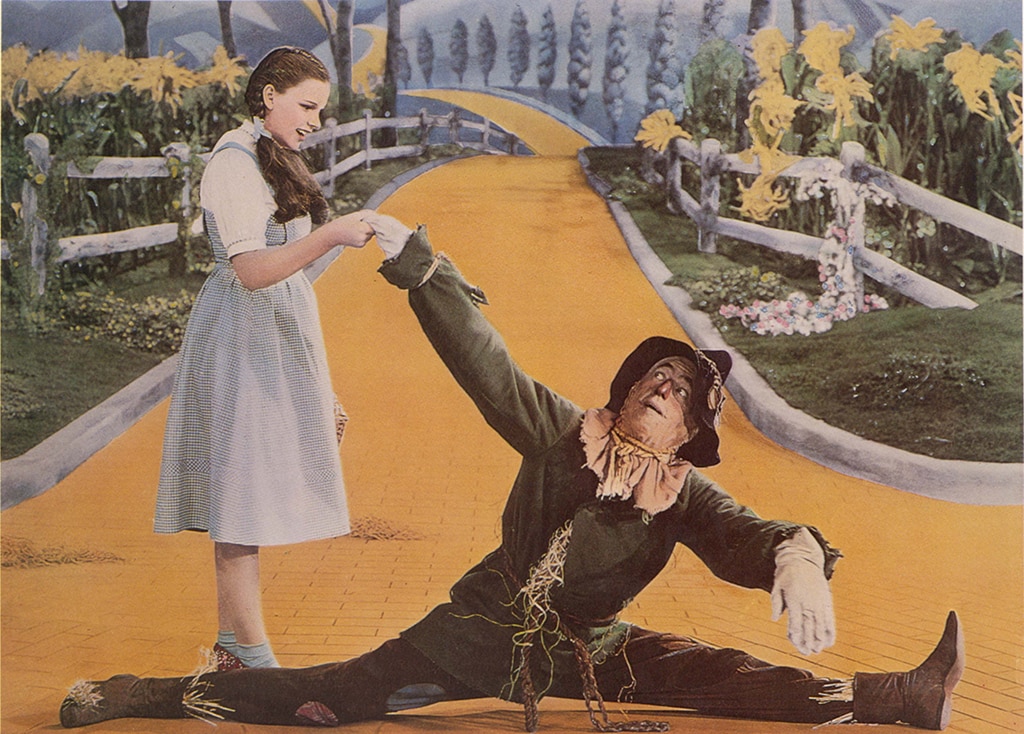
The part of the Scarecrow was played by the agile and straw-like vaudeville star, Ray Bolger. In fact, his nimbleness was so convincing that it seemed as though he was actually crafted from straw.
Actually, Joaquin Phoenix drew inspiration from study of Bolger’s movements to create the self-absorbed and dance-centric character he portrayed in the 2019 film “Joker”, which won him an Oscar.
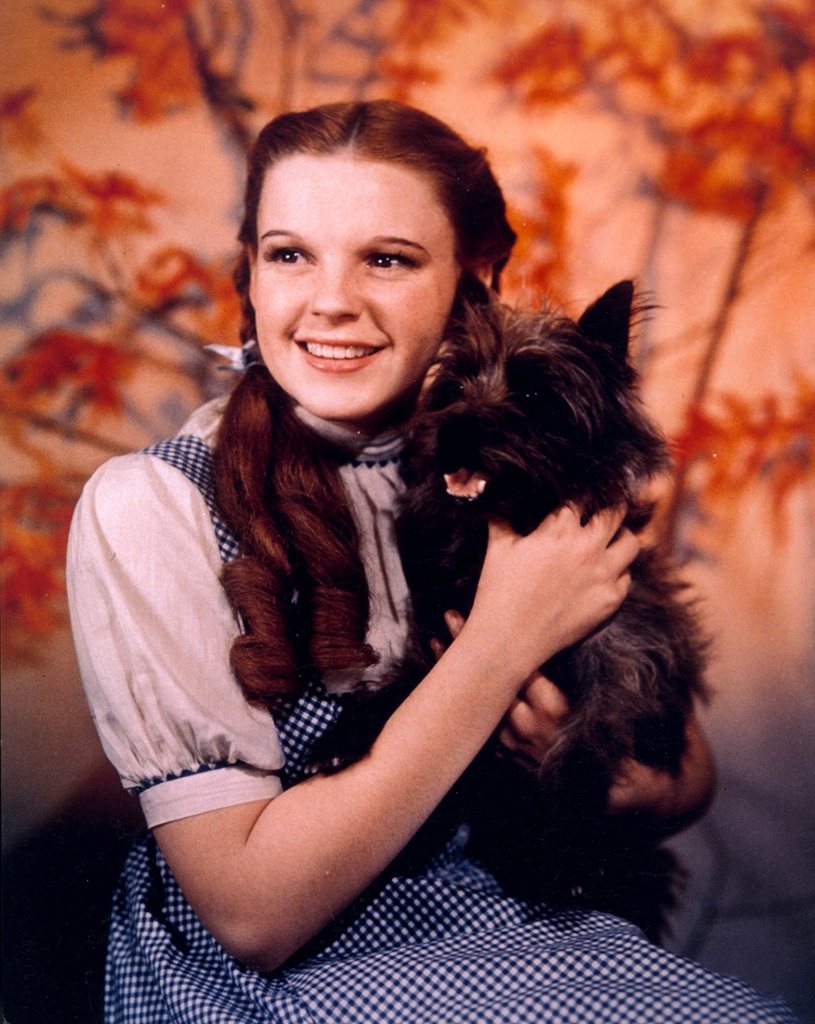
Dorothy’s beloved terrier Toto was played by a Brindle Cairn Terrier named Terry.
Originally, she earned $125 per week, which was more than what the Munchkin actors made. Following her outstanding performance in Oz, she started being known as Toto in her professional career to leverage her newfound fame.
In total, she acted in 13 films throughout her career, passing away in 1945 when she was only 11 years old. You can pay your respects by visiting a memorial dedicated to this beloved pet at Hollywood Forever Cemetery.
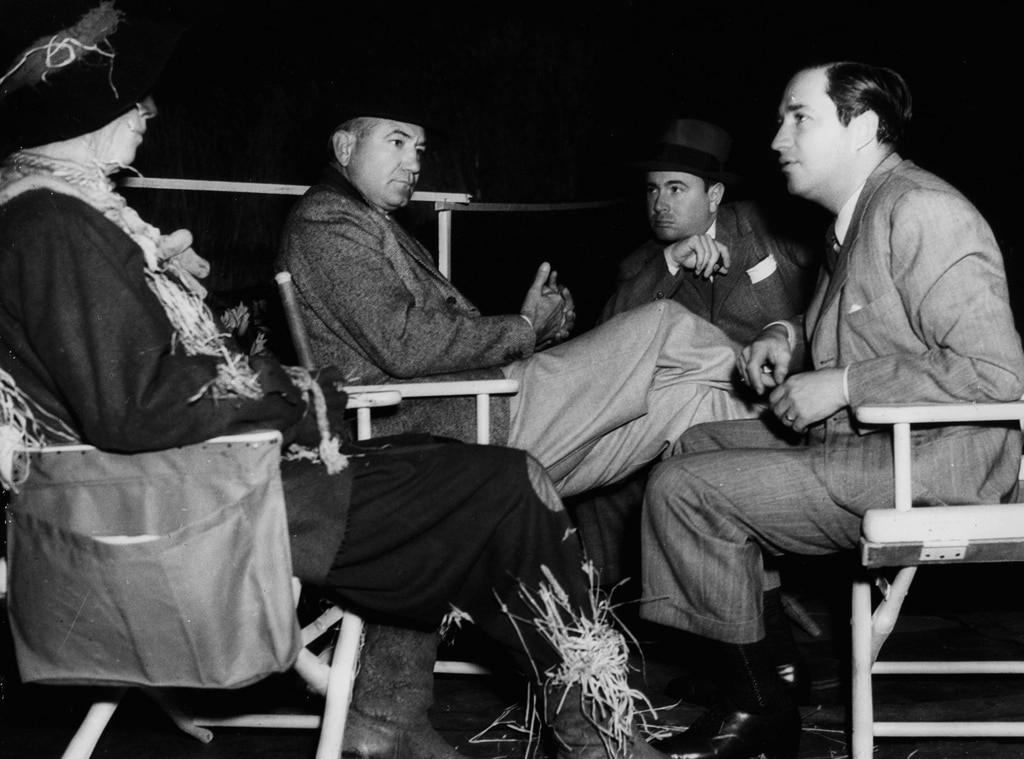
Victor Fleming, the director of The Wizard of Oz, stepped down mid-production when David O. Selznick, a powerful producer, decided to move him from the project to take over for George Cukor as the director of Gone With the Wind.
In a more conversational way, we could say: Clark Gable was often seen as grumpy, while Vivian Leigh and Olivia de Havilland were enjoying themselves, as Cukor, the actress whisperer, had formed special bonds with them.
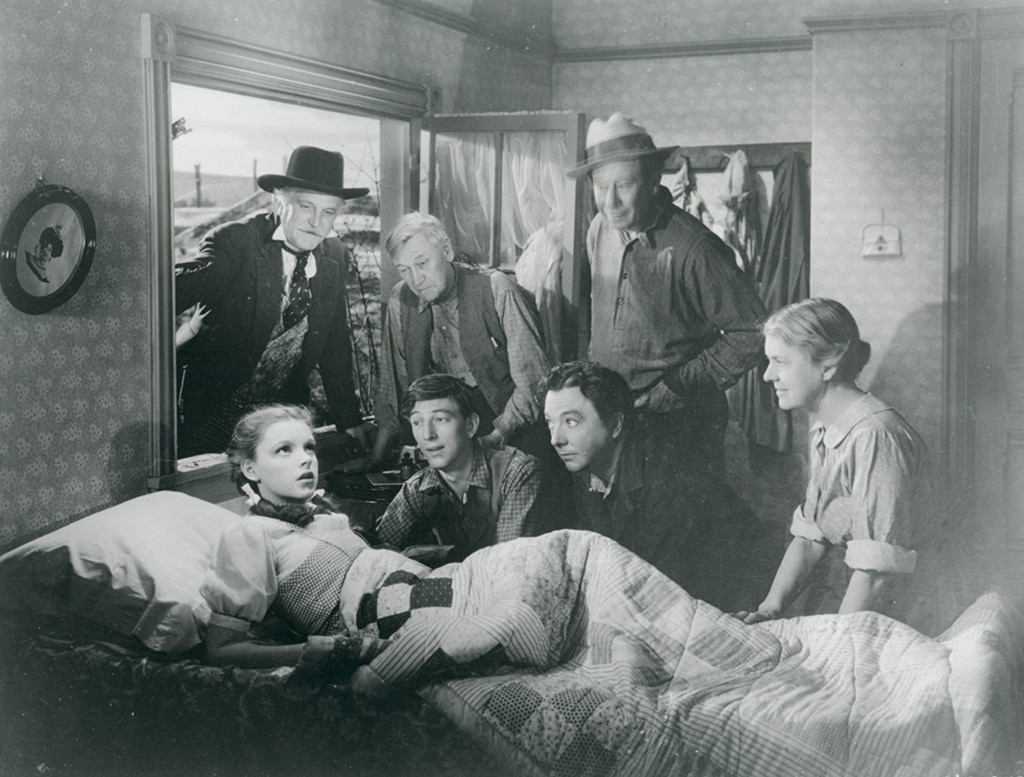
The director, King Vidor, was summoned specifically for capturing the opening and closing sequences, as well as the black-and-white scenes portrayed in Kansas.
Initially, he didn’t receive any credit, but you might find that a multitude of cast and crew members, including the actors portraying the Munchkins, were actually unrecognized for their contributions to this movie. A quick look at IMDb could provide more details.
Frequently, in older films and modern ones with script revisions, an error persists – one that deserves correcting nonetheless.
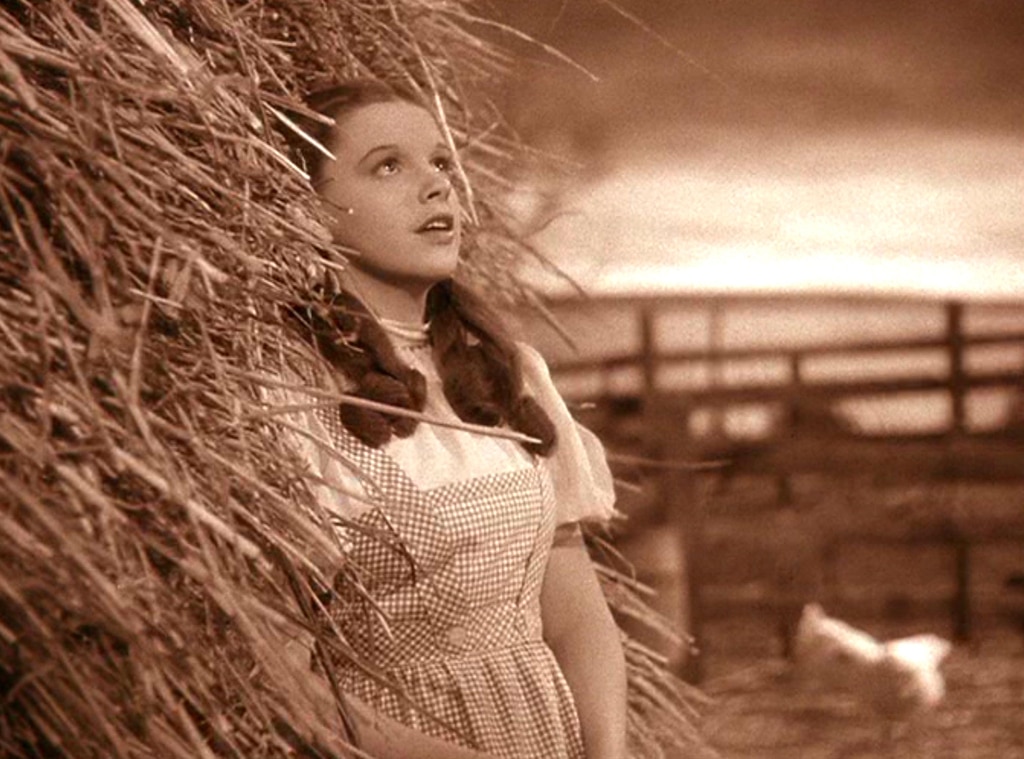
In the past, film studios preferred movies not to be overly lengthy. When the initial edit of Oz ran for two hours, it was instructed to be shortened.
One proposal was to eliminate Dorothy’s rendition of “Over the Rainbow,” but thankfully they chose to preserve one of the most timeless and iconic film songs and instead made edits elsewhere. This decision resulted in a final runtime of just 101 minutes.
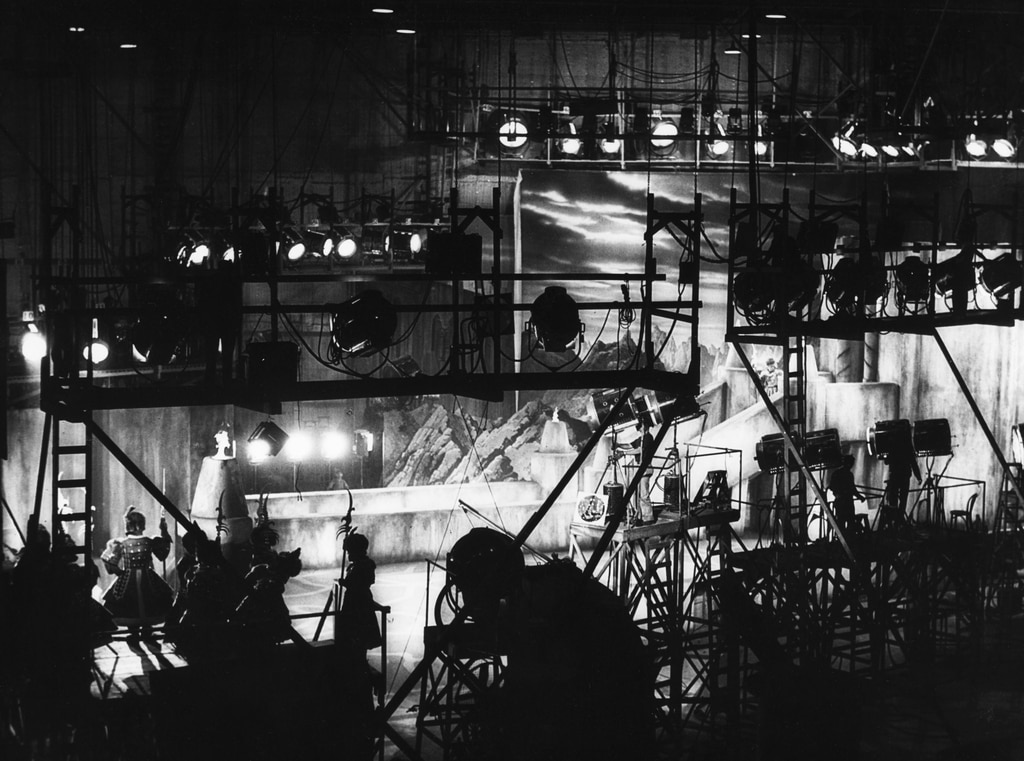
Despite not filming at any exotic locations or even Kansas, the production of The Wizard of Oz took place between October 1938 and March 1939. This elaborate project utilized 29 sound stages and 65 sets, marking it as one of the grandest productions in its era.
That year, nothing else could rival it in terms of grandeur except for “Gone With the Wind,” another 1939 production that employed the latest Technicolor technology.
Over half a century before the movie Twister swept through, the tornado in The Wizard of Oz was regarded as genuinely terrifying. Creating a convincing visual effect for this natural disaster was a passion project for special effects supervisor A. Arnold Gillespie.
Upon discovering that a 35-foot rubber funnel didn’t convincingly resemble an approaching tornado for Dorothy’s house, Gillespie creatively designed a large windsock-a cloth cone with open ends, similar to what is seen at airports today, but truncated. This windsock was constructed using muslin and chicken wire as materials, inspired by the design of modern-day airport windsocks.
With a burst of compressed air, it transformed into a whirlwind, whisking our heroine away across the rainbow.
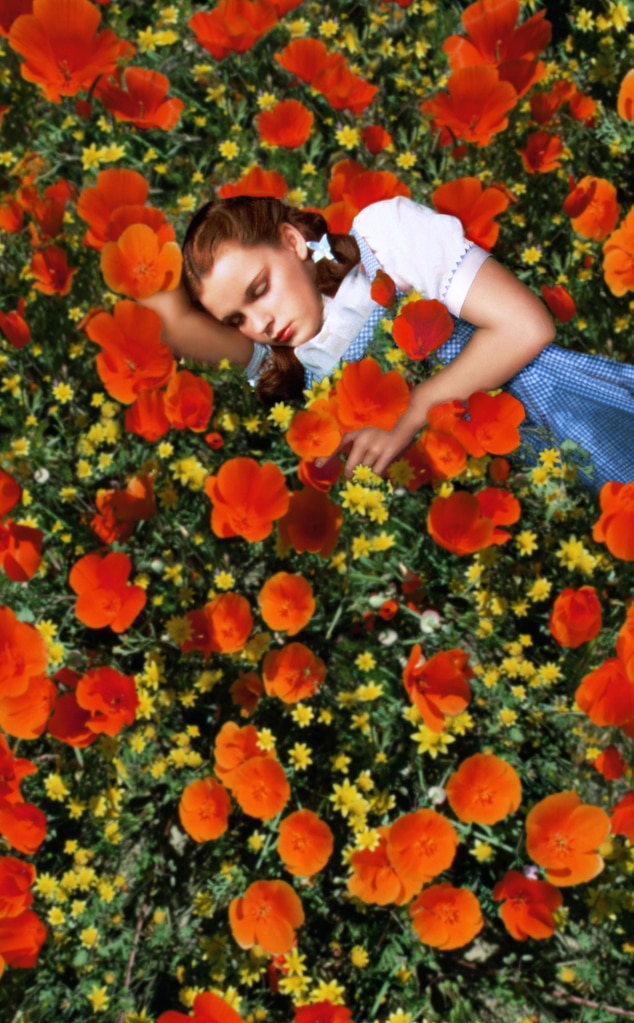
On sound stage 29 at MGM, an acre’s worth of artificial poppies were secured to the floor. This setup was for the scene where the Wicked Witch of the West casts a sleeping spell on distant flowers, aiming to prevent Dorothy from advancing towards the Emerald City.
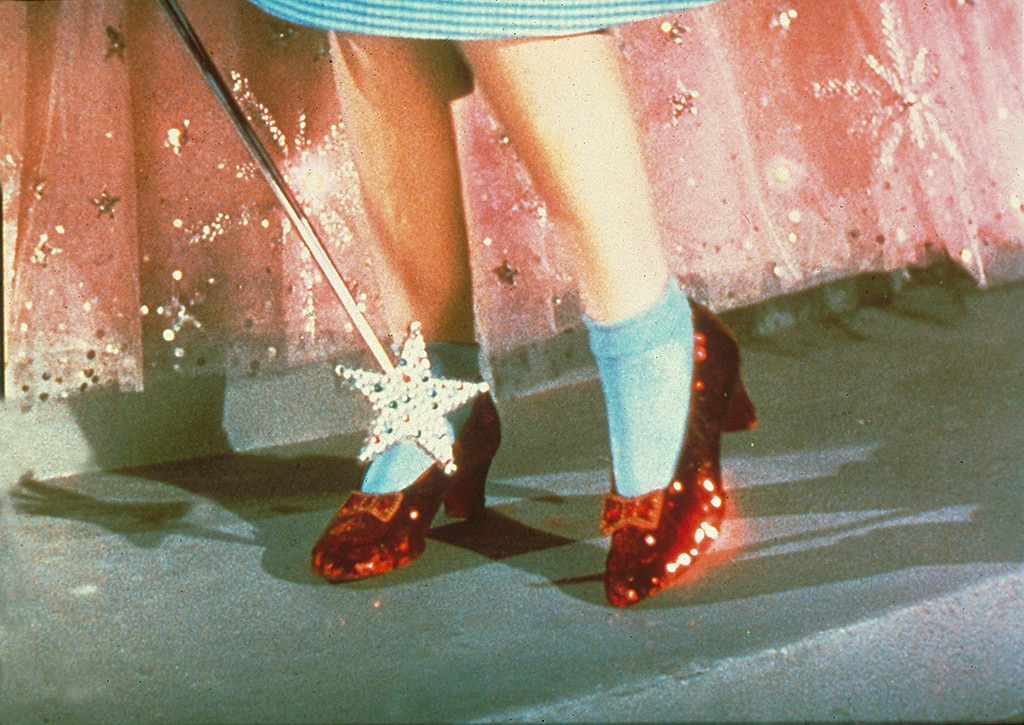
In a more natural and easy-to-read manner, the sentence could be rephrased as: Six pairs of hand-decorated shoes, adorned with sequins and beads by the movie’s costuming team under the direction of designer Adrian, represented Dorothy’s Ruby Slippers in the film.
In the movie, it’s known that Garland wore four pairs of shoes that have been preserved. One of these, purchased at an auction from MGM for $15,000 and donated to the Smithsonian in 1979, has been meticulously restored and can be seen in the National Museum of American History in Washington D.C., as part of an exhibit showcasing artifacts like Scarecrow’s hat and Glinda’s wand.
2012 saw the acquisition of a pair of items, destined to be showcased at the yet-to-open Academy Museum of Motion Pictures in Los Angeles, which was under construction for nine years prior. The total cost for these exhibits was $2 million.
Back in 2011, the actress who starred in “Singin’ in the Rain,” Debbie Reynolds, shelled out $300 for a pair of shoes that were originally used only during screen tests. These very shoes were later sold to an unidentified buyer for a staggering $627,300!
In 2005, one set of movies (originally from Judy Garland’s childhood home and now displayed at the museum in Grand Rapids, Minn.) went missing. All that was left behind by the thieves was a single sequin. The person who had donated these items received an insurance payout worth $800,000.
During a 200-hour conservation, the Smithsonian duo of slippers was being preserved. In a 2018 undercover operation, the FBI retrieved the stolen pair and contacted museum specialists to authenticate them. It was discovered that the recovered “wandering pair” of slippers were actually the long-lost siblings of the Smithsonian shoes.
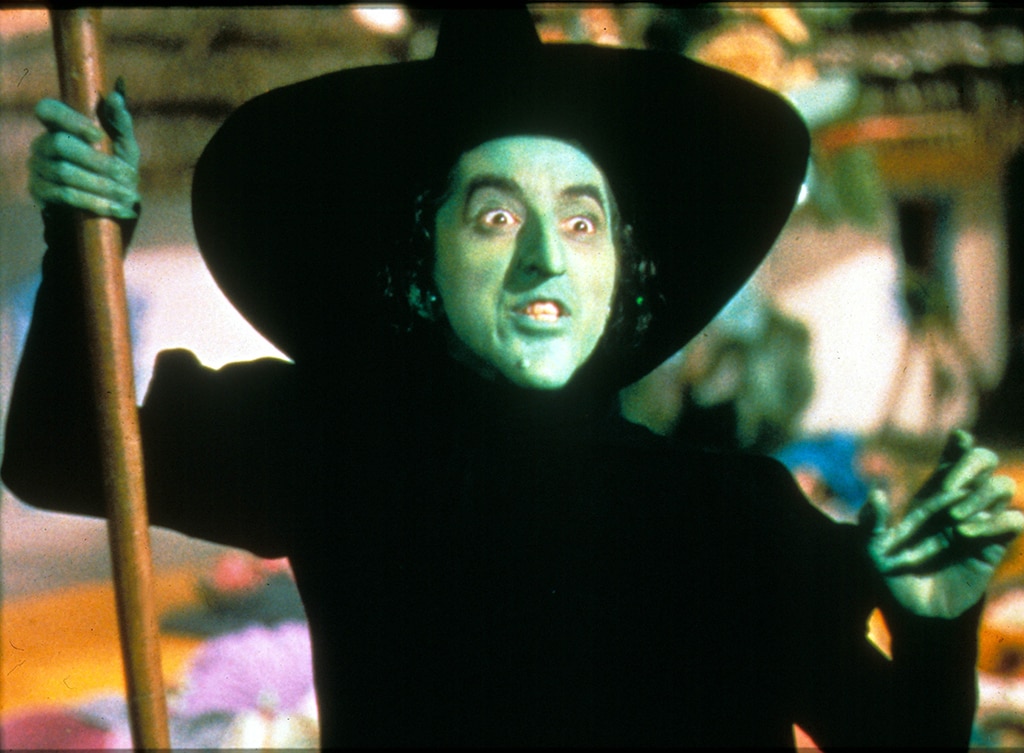
Margaret Hamilton endured quite a challenge while portraying Miss Gulch on her bicycle and the Wicked Witch of the West flying on a broomstick.
During the filming of the scene featuring the witch’s sudden appearance and disappearance from Munchkinland, shrouded in a puff of red smoke, both the actress and her stunt double named Betty Danko suffered injuries.
According to Aljean Harmetz in “The Making of The Wizard of Oz,” Danko felt distressed when a stage crew member accidentally fell through an opening covered with aluminum, right beneath where Danko was positioned for launching upwards amidst the smoke. Unfortunately, the crew member landed on Danko’s shoulder.
As a devoted admirer, I couldn’t help but feel a thrill as I watched Hamilton tackle the scene all by herself. With the crew ingeniously setting up an elevator as a replacement for a catapult to lift her high, we managed to capture that perfect shot. Yet, our visionary director, Fleming, wasn’t satisfied and called for more takes, pushing us to strive for perfection.
Hamilton remembered Fleming telling Harmetz, “Make sure it’s perfect and do it immediately,” referring to the actress, whom Harmetz described as a “wonderfully kind enchantress” in his book.
In the first four attempts, things didn’t go as planned. On the fifth try, a sudden burst of smoke and fire occurred prematurely, causing Hamilton to be quickly hidden beneath the stage. Unfortunately, she sustained second-degree facial burns and third-degree burns on her hands during this incident.
During those six weeks, she couldn’t work due to being unavailable. And when she was on the film set, the green makeup she used, which had a base of copper, needed acetone, similar to what’s found in nail polish remover, for removal.
She assured Harmetz, ‘Nothing will ever again, for the rest of my life, leave me as breathless as that intense pain did.’
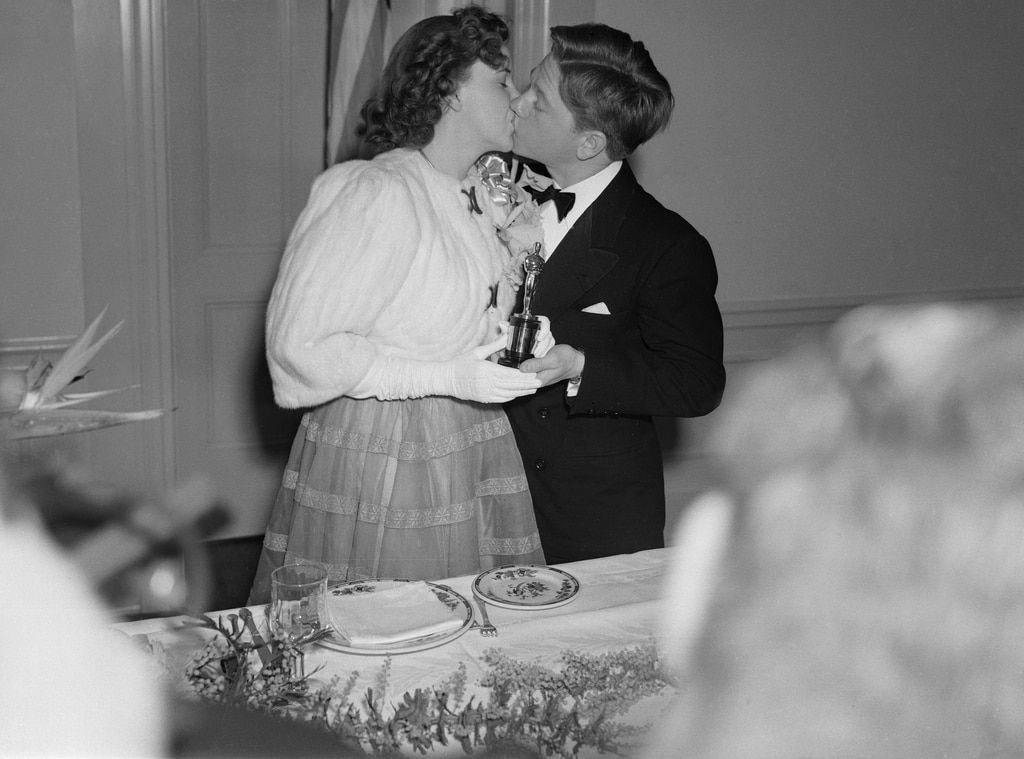
At seventeen years old, Garland received the Academy’s Juvenile Award for her exceptional acting in The Wizard of Oz, as seen in this video from the 1940 award ceremony where she is warmly congratulated by her cherished friend and frequent co-star, Mickey Rooney.
In a remarkable turn of events, Oz was nominated for five Oscars in the categories of Best Picture, Art Direction, Special Effects (which encompassed both visual and audio elements), Original Song and Score. However, it managed to secure only two awards: one for the unforgettable “Over the Rainbow” composed by Harold Arlen and penned by E.Y. Harburg, and another for Herbert Stothart’s impressive score.
The year proved to be quite challenging as Victor Fleming’s “The Wizard of Oz” faced off against the powerful force of “Gone With the Wind,” which won 10 Oscars, including Best Picture and Best Director. Notably, Fleming directed most of “The Wizard of Oz.
Eventually, the Academy adjusted their age requirement, making it possible for Tatum O’Neal to win the Oscar for Best Supporting Actress in the film “Paper Moon” at just 10 years old in 1974, thereby becoming the youngest competitive-Oscar winner in history.
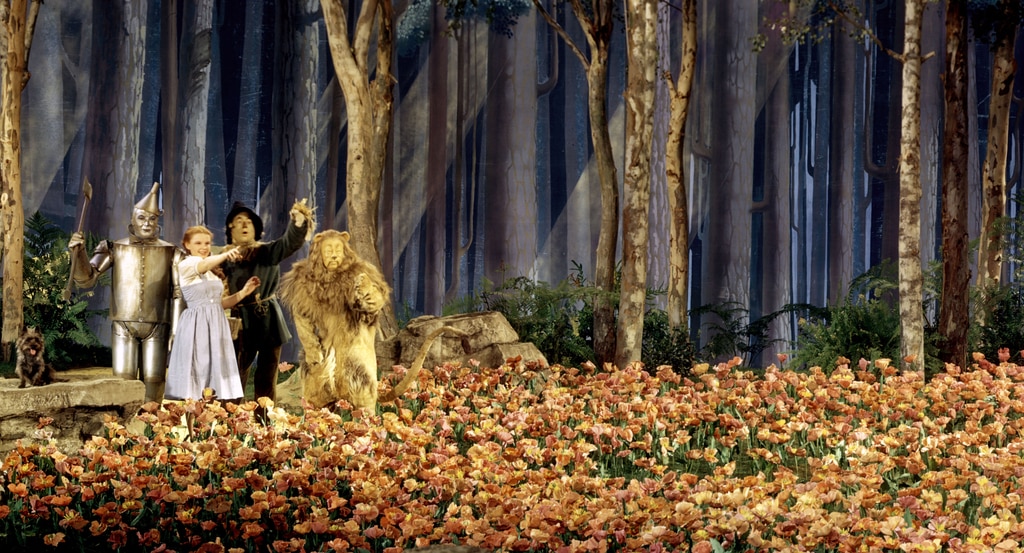
Play Pink Floyd’s 1973 album “Dark Side of the Moon” as MGM’s lion roars for the third time before “The Wizard of Oz” starts, and voila, you’ve created a unique experience known as “The Dark Side of the Rainbow”.
As I flee from my familiar surroundings, the haunting lyrics of “No one told you when to run” by Roger Waters echo within me. The whirling tornado mirrors “The Great Gig in the Sky,” its fury and chaos a stark contrast to the tranquility it promised. A beat, steady yet empty, resonates as I press my ear against the Tinman’s chest, feeling the sorrowful absence that he carries within him.
We don’t know how the music and lyrics synced up to the action in the movie, they just do.
In 2023, Waters shared on The Joe Rogan Experience that he once watched “The Wizard of Oz” while listening to “The Dark Side of the Moon,” under the influence of marijuana. He stated that if it wasn’t intentional, it was a cosmic coincidence because the way they complemented each other was quite remarkable and awe-inspiring.
Charles Savage initially brought attention to this combination in a 1995 article for the Fort Wayne Journal Gazette. In his piece, he shared that he had come across the information in an online Pink Floyd discussion forum (similar to Reddit). After renting the film on VHS, he described the experience as incredibly surprising.
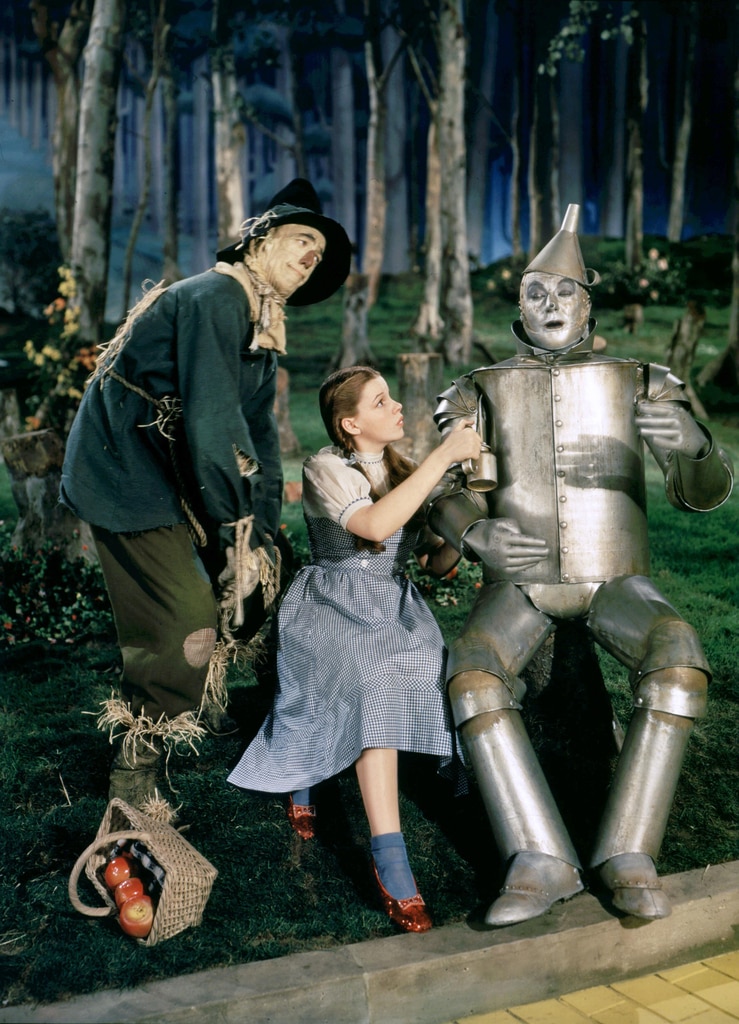
As we venture into more unconventional territory, let us clarify that none of the actors ended their lives while filming the movie “The Wizard of Oz.
As a devoted enthusiast, I’ve often heard persistent rumors about a Munchkin actor allegedly taking his life, with the incident supposedly caught on film. If one knows the right moment to scrutinize, it is said that the footage can be found.
MGM asserted that the mysterious movement following Dorothy, Tinman, and Scarecrow as they skipped along the Yellow Brick Road was actually a bird called a crane. They brought this bird, plus other animals from the Los Angeles Zoo, to add realism to the forest scenes in the film. (Many backgrounds in the movie were painted.)
Additionally, it’s been noted in various sources that the Munchkin actors didn’t begin filming until after the scene where the Tin Man meets Dorothy and the Scarecrow during their journey had already been completed.
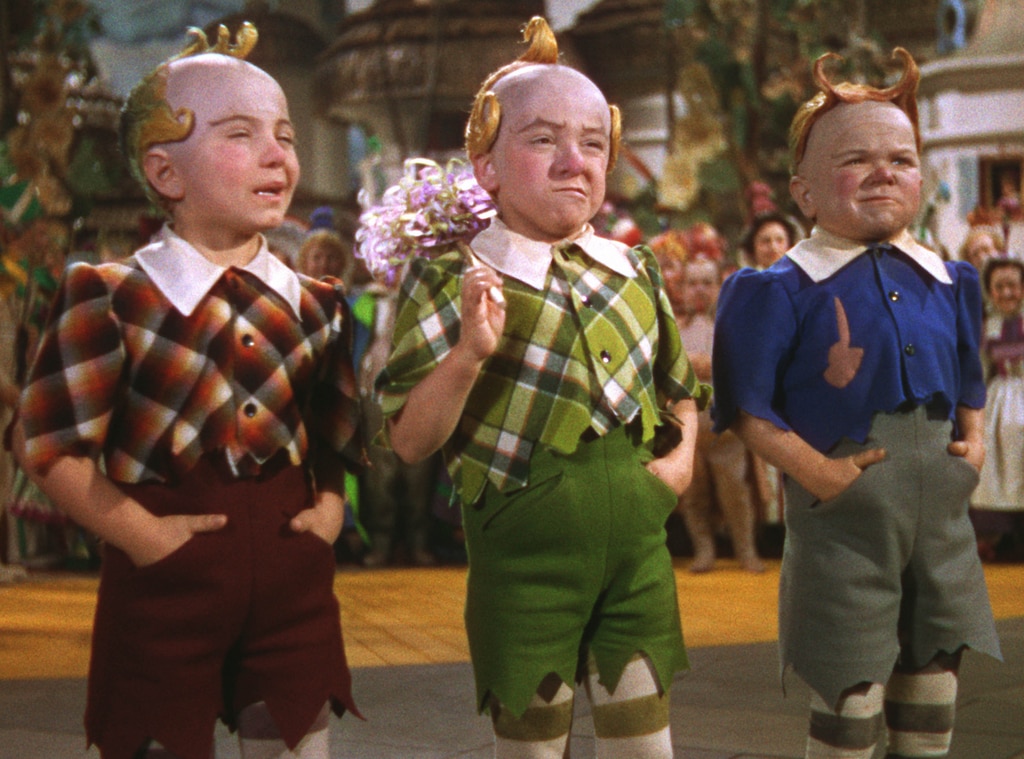
It was widely believed (and even confirmed by the film’s actors) that the actors portraying the inhabitants of Munchkinland often behaved mischievously during their spare time.
In a 1967 interview with Jack Paar, Garland remarked that they were often heavily intoxicated. He stated that they would get extremely drunk every evening, to the point where the police would round them up using large nets, much like catching butterflies.
Jerry Maren, who donned the green plaid attire as a member of the Lollipop Guild in “The Wizard of Oz” and was the last living Munchkin before passing away at 98 in 2018, disagreed with his and his fellow actors’ portrayal.
On that particular day, Judy was speaking under the influence of her medications and alcohol, as Maren noted in his 2006 memoir (co-authored with Stephen Cox) titled ‘Short and Sweet: The Life and Times of the Lollipop Munchkin.’ She left behind a questionable account of our lives.
In the movie with approximately 120 small characters, he penned about two German children who had a fondness for beer. These kids would drink beer not just during the day, but also in the morning and at night, often finding themselves in minor predicaments. Their wish was to mingle with the girls, however, they were the only ones present.
Margaret Pellegrini, who was part of the Munchkin village cast, cherished the time spent there. She reminisced, “My dad worked at a hotel and earned roughly $5 per week. In contrast, I received $50 per week for my role.” She added, “Filming the Munchkinland scenes took eight weeks, following which I spent an additional month in Hollywood, exploring the city.
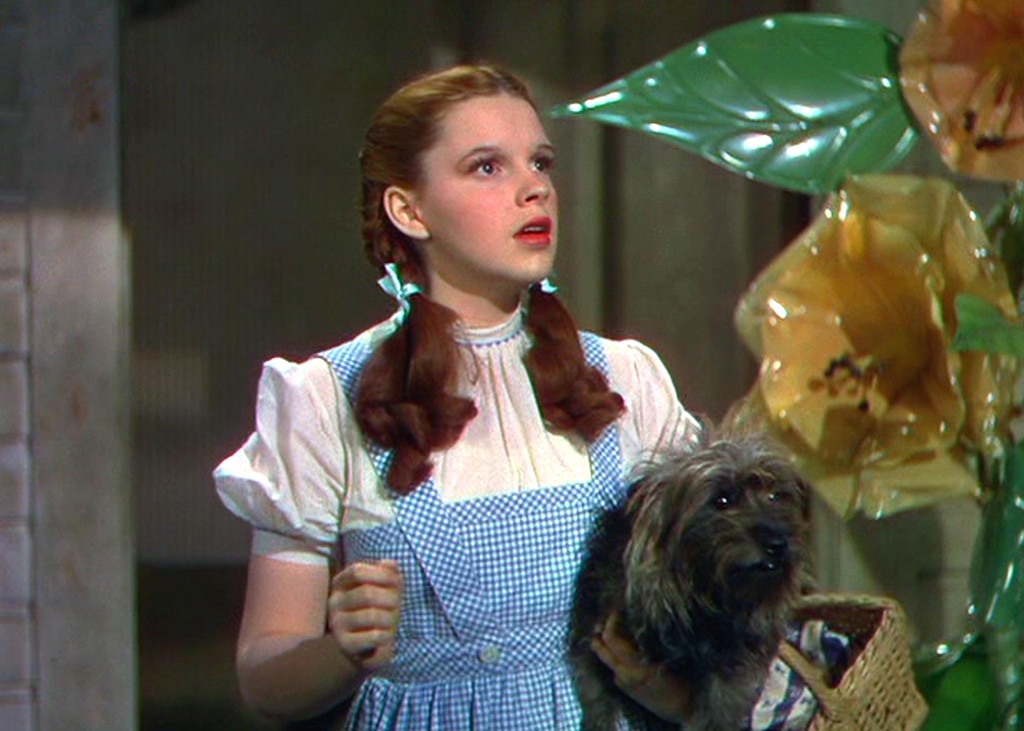
As I followed my path towards stardom while playing, I found myself becoming one of the most renowned figures in Hollywood. Yet, even as a child prodigy who had honed her singing and dancing skills, Judy Garland’s life was starting to unfold in a heart-wrenching trajectory.
In 1935, at the age of 13, MGM started working with a highly versatile actress, who was then encouraged by the studio to reduce her weight. To help her manage energy levels and curb her appetite, she was provided with amphetamines, while sleeping pills were given to aid in getting enough rest.
In her conversation with Vincente Minnelli, her future second husband, while he was directing her in the 1944 MGM musical “Meet Me in St. Louis”, as detailed in Gerald Clarke’s 2000 biography “Get Happy: The Life of Judy Garland”, she confided, “I constantly need to give my best performance for the camera. You expect that of me too. There are times when I don’t feel my best. It’s a constant struggle to get through each day. I rely on these pills to help me persevere.
In his 2017 memoir titled “Judy and I: My Life With Judy Garland“, Judy Garland’s third husband, Sid Luft, recounted that she confessed she felt taller by inches when she used Benzedrine. The additional “bennie” boosted her courage to stride around as if she was 10 feet tall.
Garland died of an accidental overdose of barbiturates in 1969. She was 47.
Read More
- Ashes of Creation Rogue Guide for Beginners
- ARC Raiders – All NEW Quest Locations & How to Complete Them in Cold Snap
- Best Controller Settings for ARC Raiders
- Ashes of Creation Mage Guide for Beginners
- Where Winds Meet: How To Defeat Shadow Puppeteer (Boss Guide)
- Where Winds Meet: Best Weapon Combinations
- Fishing Guide in Where Winds Meet
- Eldegarde, formerly Legacy: Steel & Sorcery, launches January 21, 2026
- Hazbin Hotel season 3 release date speculation and latest news
- Bitcoin’s Wild Ride: Yen’s Surprise Twist 🌪️💰
2025-08-27 00:49